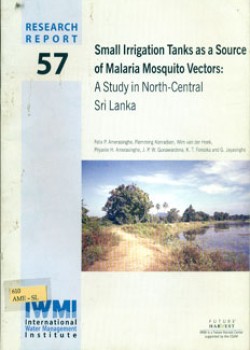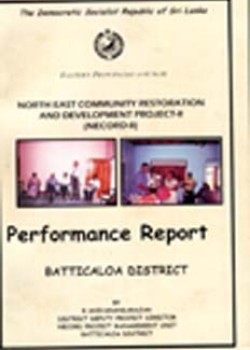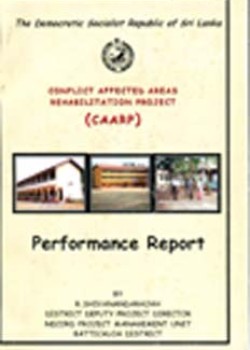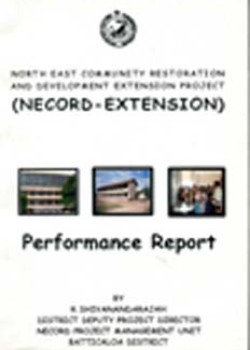
Small Irrigation Tanks as a Source of Malaria Mosquito Vectors
A Study in North-Central Sri Lanka
Author : Amerasinghe, Felix P. and Konradsen, Flemming et.al.
Publisher: International Water Management Institute (IWMI)
Place of Publish: Sri Lanka, Colombo
Year: 2001
Page Numbers: 28
Acc. No: 2966
Class No: 610 AME-SL
Category: Books & Reports
Subjects: Health
Type of Resource: Report
Languages: English
ISBN: 92-9090-461-5
Malaria causes human mortality, morbidity andeconomic loss, especially in tropical ruralcommunities. The disease is transmitted byAnopheles mosquitoes whose larval stagesbreed in watery habitats such as those found inirrigation systems. Mosquitoes that transmitother diseases, as well as nuisance mosquitoes,may also breed in such habitats. This study investigated mosquito breeding innine small irrigation reservoirs. A case study on malaria at a villagewithin the Upper Yan Oya watershed that feedsthe Huruluwewa reservoir in the dry zone of SriLanka showed the potential for breeding ofmalaria vectors in the village irrigation tank,which formed part of the tank cascade system. The objectives of the present studywere to determine: a) whether important malaria vectormosquitoes breed in the tanks, b) tankcharacteristics that may enhance mosquitobreeding, and c) rehabilitation and managementmeasures that may help reduce opportunities formosquito breeding in the tanks. The presentreport attempts to explore these issues,examining irrigation tanks holistically, to includethe tank proper as well as tank-bed pools and surface-water accumulations resulting fromseepage across the tank bund. The study demonstrated that the major Anopheles malariavector in Sri Lanka did notoccur frequently in the small irrigation tanksstudied. Secondary malaria vectors and othersinvolved in malaria transmission to a lesserdegree did occur in abundance. The study atMahameegaswewa village demonstrated that, at least, some tankscould, sporadically and under certain conditions,be involved in generating large numbers of themajor malaria-vector mosquitoes that thenmediated disease outbreaks. More recently, abandoned tanks havebeen shown to be a possible factor in highlymalarious areas of the Walawe basin. Thus, the potential for theinvolvement of tanks in malaria outbreaks doesexist. The study demonstrated conclusively thattanks provide suitable conditions for the breedingof several Anopheles mosquitoes that areestablished secondary vectors of malaria, or areknown to have some involvement in malariatransmission. Thus, tanks can beconsidered to make a significant contribution tothe maintenance of disease and discomfort inpoor rural communities in the dry zone of SriLanka.



